Where the wild things are is a shifting concept influenced by culture, upbringing, environs, what we watch on our screens, and, for me, the tussle between my education as a wildlife biologist and my experiences in the field. Taking to heart a core tenet of conservation science—that wild animals, certainly large carnivores, belong in the wilderness—I began my career in the 1990s by visiting nature reserves in India to study Asiatic lions and clouded leopards. When in the new millennium I stumbled on leopards living in and around villages, I was shocked. “They shouldn’t be here!” my training shouted. But there they were, leaping over the metaphysical walls scholars had constructed between nature and humankind as nonchalantly as they strolled past the physical boundaries of protected areas.
Take the first leopard I collared with a GPS tag: a large male that had fallen into a well near Junnar, in the Indian state of Maharashtra, in the summer of 2009. He took refuge on a ledge just above the water, and forest department personnel rescued him by lowering a ladder with a trap cage at the top into the well. It had been a hot day, and the leopard was clearly old and very tired, but even after climbing up into the cage, he remained unruffled. My team—veterinarian Karabi Deka, a local farmer named Ashok Ghule who served as a translator and guide, me (a doctoral student at the time) and some others—made sure he was secure, and Deka shot a tranquilizer dart into him through the cage bars. He didn’t even growl. His calm, gentle and elderly demeanor induced us to call him Ajoba, which means “grandfather” in Marathi, the area’s local language.
We released Ajoba the same night in a forest 52 kilometers away. Over the next weeks we watched his movements, as revealed by the intermittent signals from his collar, with astonishment and trepidation. Ajoba walked right out of the forest and traveled over farmland, through another wildlife preserve, across an industrial estate full of smoke-belching factories and a four-lane highway, and past a busy train station. After walking 125 kilometers in about a month, he reached Mumbai and settled down near the edge of the Sanjay Gandhi National Park (SGNP), where jungle borders a city of more than 20 million people.
For years the forest department had been assuaging public fear of leopards by capturing them from inhabited areas and releasing them in forests. Ajoba must have been exiled from Mumbai’s suburbs and now had simply gone home.
As humans, we believe that only we have agency. But like tens of millions of people in rural India whose forests and fields are being converted to mines, factories, dams and highways, animals must adapt if they are to survive in an increasingly challenging world. The biology of large cats dictates that they roam across tens or hundreds of kilometers to find mates and have cubs; failing such dispersal, inbreeding and, with it, extinction are imminent. It is because these felines refuse to be confined to the 5 percent of India’s land surface designated as protected that—alongside 1.4 billion people—the country continues to shelter 23 percent of the planet’s carnivore species, including at least half the world’s tigers, the only surviving population of Asiatic lions and almost 13,000 leopards.
But they must not cause so much harm that people retaliate. Around the world the primary threat to big cats is humans. According to the Wildlife Protection Society of India, poachers in search of skin, claws or bones, for which there is an illicit market, or villagers angered by the loss of livestock killed almost 5,200 leopards in that country between 1994 and 2021. Even so, something about the way much of rural India views wild animals enables thousands of leopards to live in areas with roughly 400 humans per square kilometer. Observing how they do so convinced me that if large carnivores are to survive into the future, it is necessary to change the way the rest of us view them.
This is a story of two highly adaptable species sharing the same space—and a story of hope in these otherwise bleak times for wildlife. Here commonplace notions about large cats being fearsome and bloodthirsty break down. Instead we find wild carnivores and people trying to survive, having their young and living in their societies right next to each other.
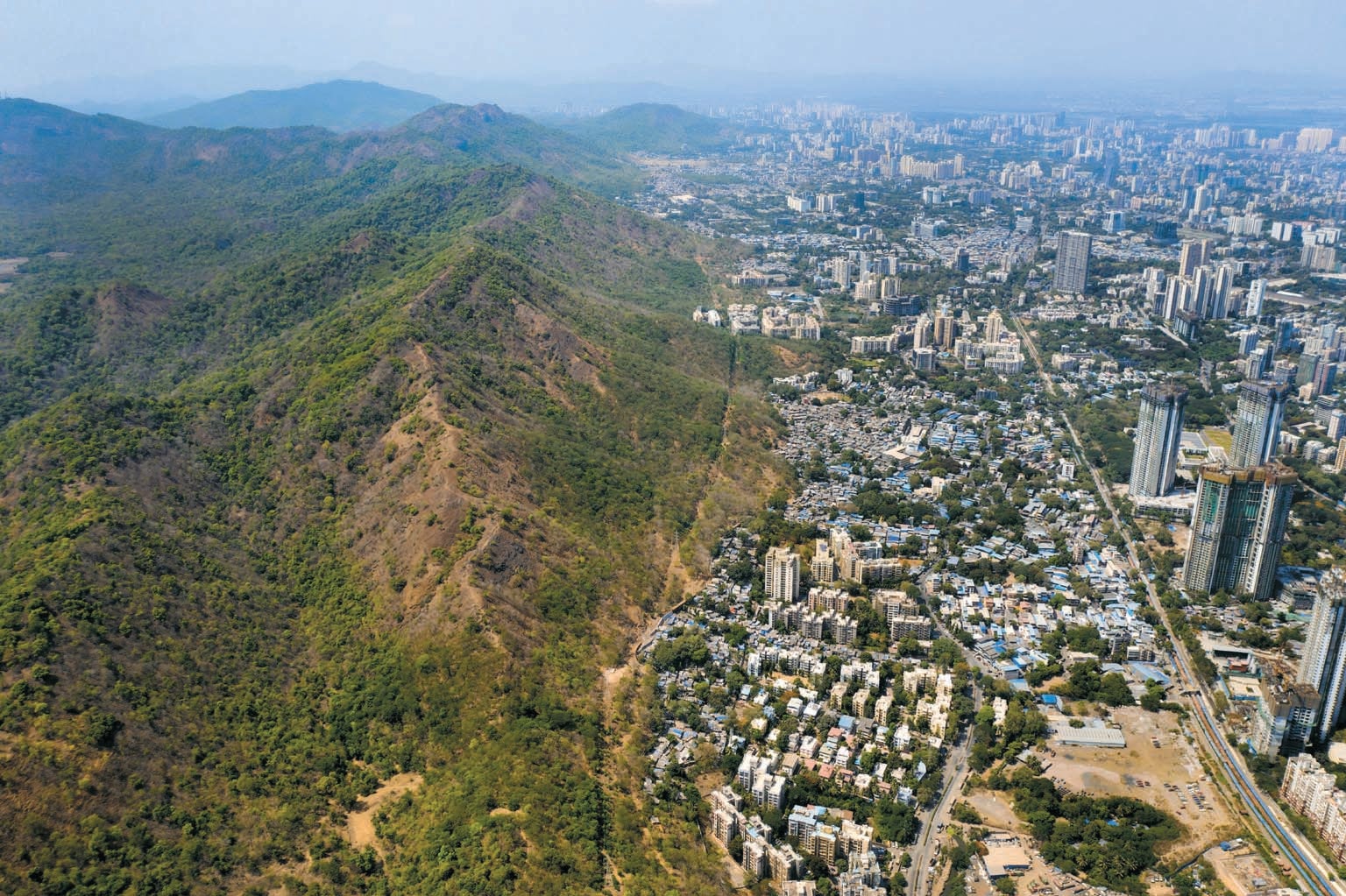
An Eye for an Eye
I’ve been fascinated with large cats since I first encountered the story of Lord Ayyappa, when I was a little girl. Ayyappa is a Hindu god who, as a child, was ordered to get tiger’s milk. He did so, returning on the back of a tigress. The imagery in my picture book was peaceable, full of compassion and understanding, and it seems to have stayed in my head.
In 2001, after getting master’s degrees in ecology and evolutionary biology, I found myself living in the Junnar subdistrict, a rural area full of sugarcane fields. I was the mother of a small child. I had followed my then husband, a physicist, to the Giant Meterwave Radio Telescope there and planned to devote all my time to raising my daughter. But I became intrigued by reports of large numbers of people in the area being injured or killed by leopards. Between 2001 and 2003 leopards attacked 44 people in Junnar. Some of those assaults may have been accidental, but others were premeditated, as when cats lifted small children who were sleeping outdoors between their parents, killing them so swiftly and stealthily that no one woke up.
It made no sense. Why were there so many leopards in this agricultural landscape, which was bereft of wild herbivores for them to feed on? And why were the animals so aggressive? There were no reports in the conservation literature on large carnivores outside of protected areas, but Maharashtra’s forest department was capturing leopards all over the state’s rural areas for release into forests. (Leopards are smart, but being cats, they will enter boxes—trap cages.) I received a small grant and put together a team to microchip them. The tags did not transmit signals, but a handheld reader would allow us to identify an individual if it happened to be recaptured. For every leopard, I noted where it was caught and why—and I soon realized they were being moved to jungles not because they’d attacked people but simply because they’d been seen near villages.
In 1972 the Indian government had passed the Wildlife Protection Act, which prohibited the killing of endangered animals. (A tiger or leopard that was proved to habitually prey on people could, however, be shot.) Since the 1980s forest departments in India, held responsible for large wild animals, had been removing leopards from inhabited areas as a way of reducing conflict between leopards and humans. By the mid-2000s it was clear that, at least in Junnar, translocation itself was increasing conflict.
For years Junnar’s villagers reported an average of four leopard attacks a year. Then, in February 2001, the local forest department initiated the translocation program. During the following year its staff released 40 leopards caught in the region and elsewhere into two protected areas tens of kilometers away. Attacks on humans near the reserves more than tripled, to about 15 a year, and the fraction of fatal attacks doubled, to 36 percent. And there were more attacks near the release sites. One leopard caught and tagged in Junnar, and which the forest staff moved to a protected area in Maharashtra’s northwest, went on to attack people near its release site. (We realized it was the same cat when it was recaptured, and we scanned its microchip.) It was the first time the region had experienced such attacks, despite leopards having always lived there.
Leopards are very secretive, so we cannot really know how capture and release affects them. What we do know is that stress increases aggression, and moving large cats in captivity from one zoo to another elevates their levels of stress hormones. Home is a biological imperative for cats. And in the few places where wild leopards occasionally show themselves, such as Sri Lanka and Africa, they have social lives, centered on females; it stands to reason that disrupting their relationships compounds the stress of relocation. Moreover, studies in Russia on collared tigers found that when they did attack, they were usually responding to being provoked or injured. In 1988 Asiatic lions preyed on humans for the first time since 1904—after 57 lions were moved from human-dominated areas to Gir National Park, a protected area dedicated to them.
Had the translocated cats learned to see humans as threats? Whatever the reasons may be, when leopards were separated by humans from their homes and families and released in unfamiliar terrain, it was disastrous for the villagers they chanced on.
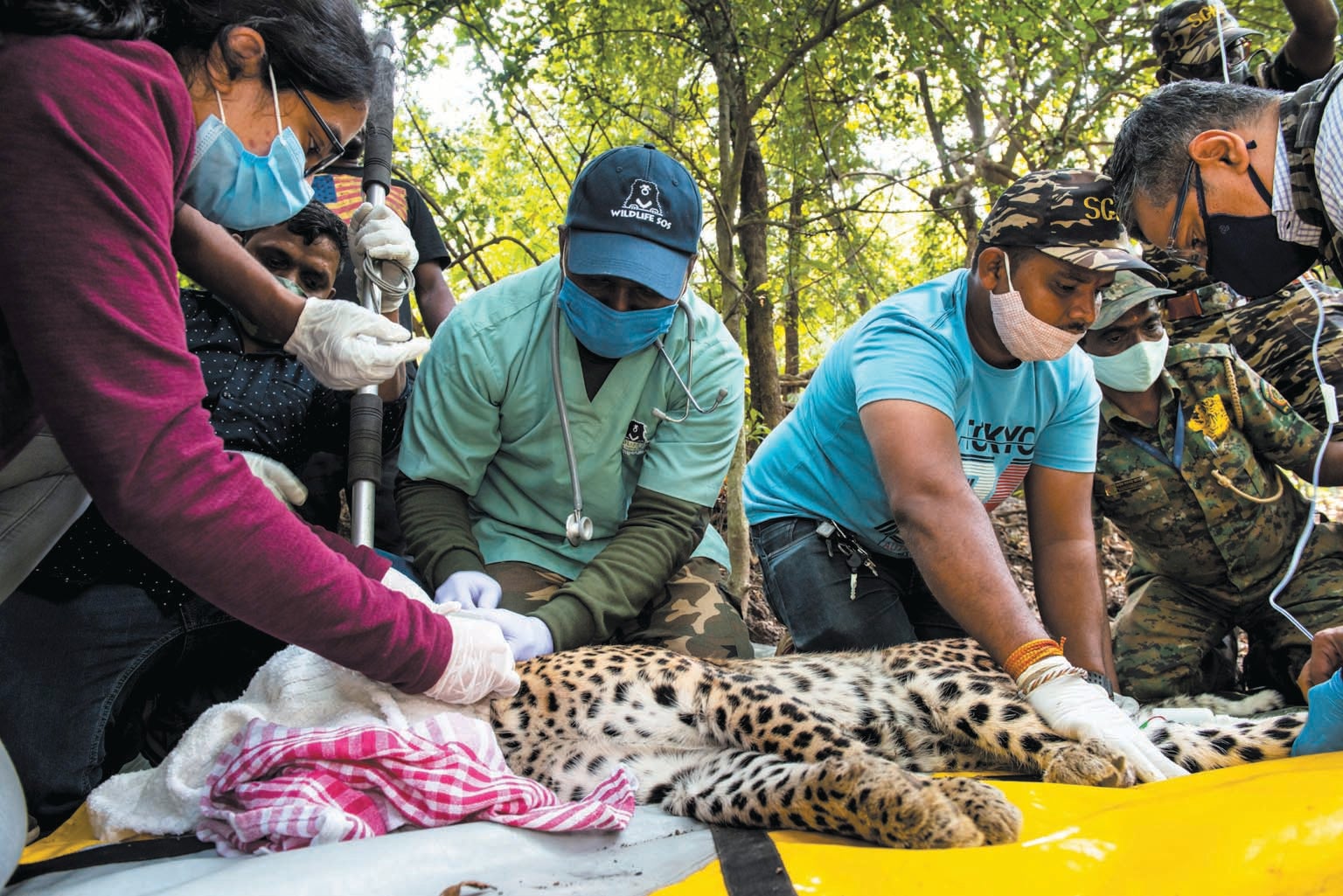
Live and Let Live
While traveling around Maharashtra microchipping leopards in the early 2000s, I’d become intrigued by a region of beautiful hills and valleys just north of Junnar. A lot of leopards were being captured in this agricultural area—one female and her cubs were trapped inside a wheat field. There were apparently many leopards in a place with many people, yet there were no attacks. I wanted to understand why.
By then I had been working on leopards with the forest department for four years, and my record persuaded senior wildlife biologists Ullas Karanth and Raman Sukumar to support a doctoral project investigating leopard ecology using tools such as camera traps. When I started work around Akole, a town of 20,000 people, I wasn’t even sure there were enough leopards there for us to learn anything meaningful. No scientist had ever reported a leopard from this locale. But the field staff of the forest department showed me the evidence: fresh pugmarks (paw prints) at the side of a field, in courtyards and in school playgrounds; kills hanging in trees; dogs missing or injured; a dead pig here and there. I seemed to be in the right place. But how could I design a camera-trap study in a place where people were everywhere? I was one of the last biologists using film cameras. Every roll was precious, and the cameras might get stolen.
It was a difficult period for my six-year-old daughter, who would cry every time I left for Akole, where I stayed during weekdays. I began by interviewing 200 villagers about their livestock losses and leopard encounters and telling them about my project. At first they were surprised to see a field ecologist, particularly a woman, setting up cameras in sugarcane fields and walking for kilometers to look for leopard signs, but soon they got used to me and would offer me breakfast, lunch or tea when they saw me.
In the early days it was scary to walk in six-foot-high stands of sugarcane and other tall crops where the animals could hide or along dry streambeds with overhanging shrubbery where they might rest. To avoid surprising a leopard, I took to talking to myself if I walked alone; if someone else was there, we chatted.
As I talked to the farmers, my fear just went away. They were regularly interacting with the leopards. A man at a local tea shop recounted, with great amusement, how his wife had thrown dirty water from her home onto the field below and was terrified to hear the growl of a leopard she’d splattered; the leopard simply went on its way. A farmer told me how he’d run out of his house when he heard his cattle bellowing at night and spotted a leopard running off when it could have turned and attacked him. One old lady described holding on to the back legs of her goat while a leopard was trying to pull it away by the front legs. She was alone in a secluded place, and yet the leopard gave up and ran away.
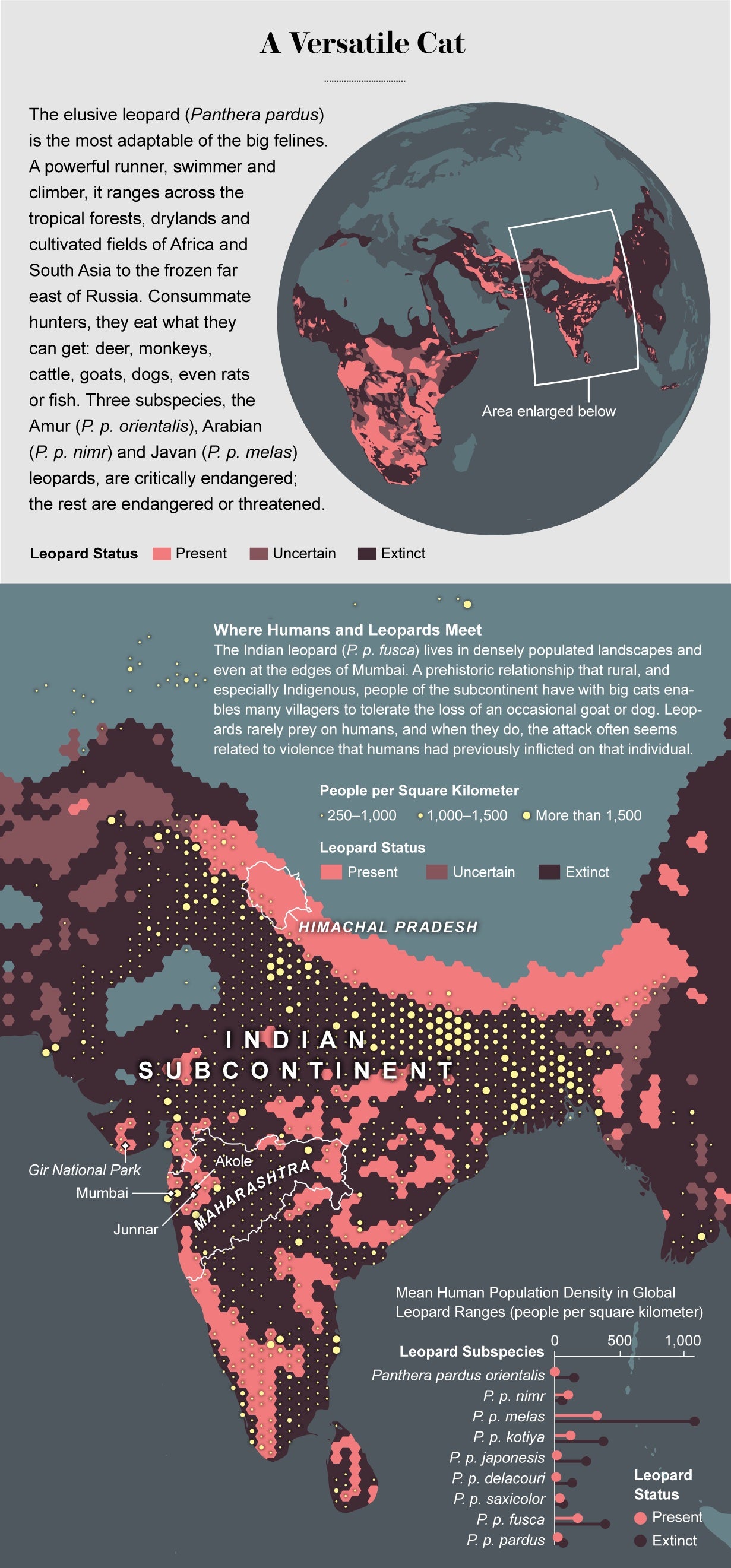
In the summer people routinely slept outdoors in the cool air without fear. The few attacks on humans I heard about were accidental, such as when a leopard jumped on a dog on a path and collided with a couple on a passing motorcycle; they all tumbled into a field, and the leopard ran away. In the villages around Akole, no leopard had killed anyone in living memory.
It took me a year to set up the first motion-triggered cameras across my 179-square-kilometer study area. I placed them alongside paths humans used where I had found pugmarks and scat. The first shots were of cattle, dogs and posing villagers, such as an old farmer who got down on all fours and crawled past, growling. But soon the real leopards showed up. We used the rosette patterns on their coats to identify the individuals we photographed, and statistical models helped us extrapolate the numbers to estimate how many leopards were going undetected.
The results were fascinating. There were high densities—five per 100 square kilometers—not just of leopards but also of hyenas, carnivores just as large. And this was in an agricultural landscape with human densities of 357 per square kilometer, by my measurements. For comparison, in Namibia the density of leopards varies from one to four per 100 square kilometers, but the average human density is just three per square kilometer—less than one hundredth of that in Akole. The croplands surrounding the village were also home to jungle cats—small felines that often stole domestic chickens—as well as jackals and foxes. The rare rusty-spotted cat was even breeding there.
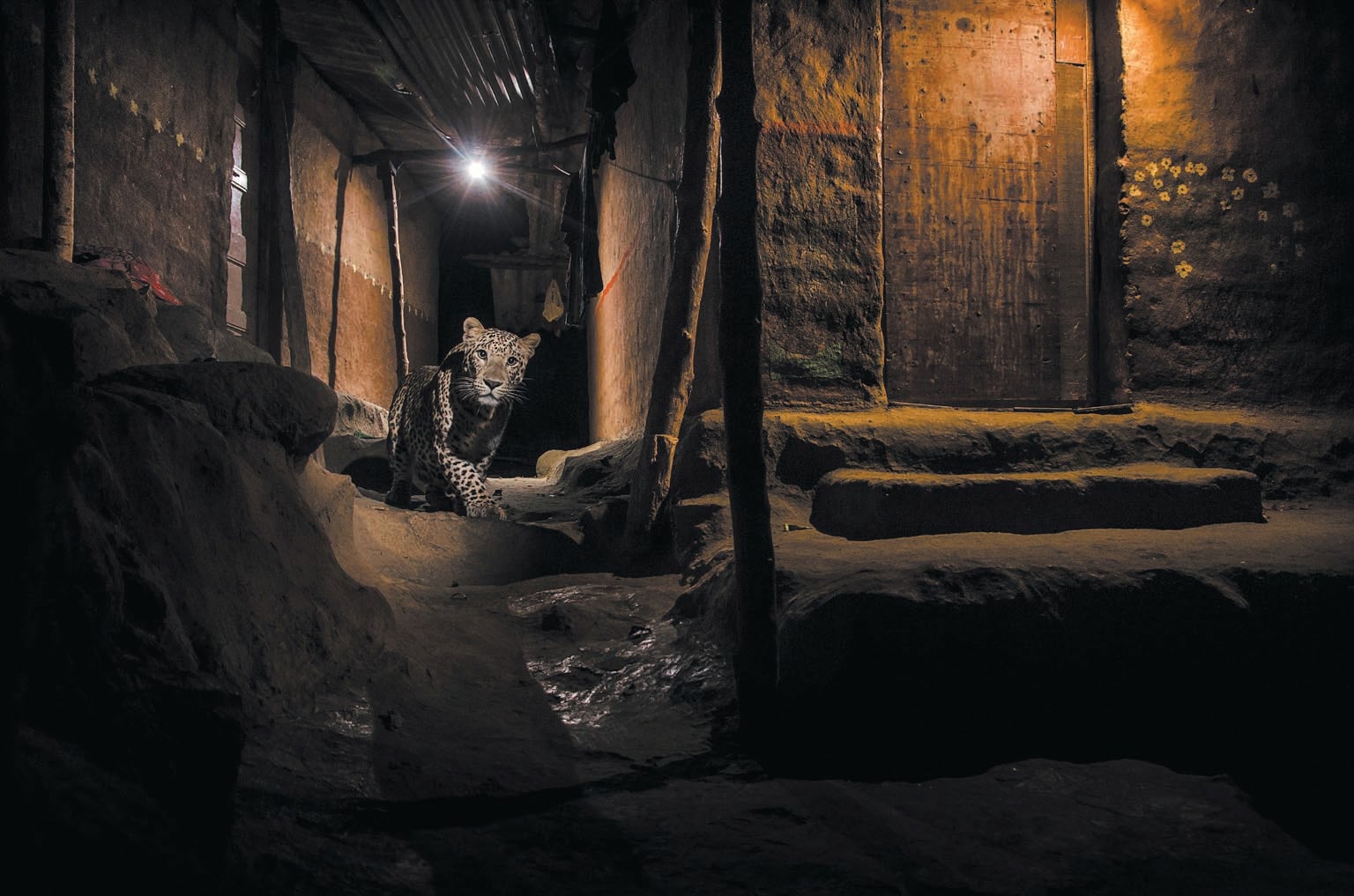
To figure out what the leopards were eating, volunteers and friends helped me collect scat and examine it for undigested remains of hair, claws and hooves. (DNA markers confirmed the scat was indeed from leopards.) To my surprise, leopards in this landscape were eating primarily dogs (39 percent of their diet), and overall, domestic animals made up 87 percent of their prey. Interestingly, dogs supplied almost four times more biomass to the leopards’ diets than goats did even though goats were seven times more numerous in the area. Farmers confirmed that they lost far fewer livestock to predators than to diseases or accidents, which may have made them more accepting of the loss of the occasional goat.
Never before had such high densities of large carnivores been reported in a populated landscape in India. To the staff of the forest department, it was no surprise, but most of my colleagues in conservation refused to believe the leopards were living there.
Secretive Lives
If I were to put radio collars on some of the leopards, the GPS signals they transmitted would help us learn more about how they were sharing space with the people of Akole. I was initially reluctant to collar the cats—the stress of the intervention could be disastrous both for the leopards and for the villagers who’d made me feel so welcome—but the deep interest of Maharashtra’s chief wildlife warden and my scientific curiosity induced me to try. What we found was remarkable.
The radio signals showed that the cats spent their entire day hiding in small bushes or inside the dense, six-foot-tall sugarcane fields—within pouncing distance of people going about their business, unaware of the leopards lurking nearby. At night, when the rural landscape was devoid of people, it was, from the cats’ perspective, just another wild space. The tracking data showed us that this was the leopards’ time, when they stalked houses, looking for goats and pets, and prowled garbage dumps hunting for foraging dogs and domestic pigs.
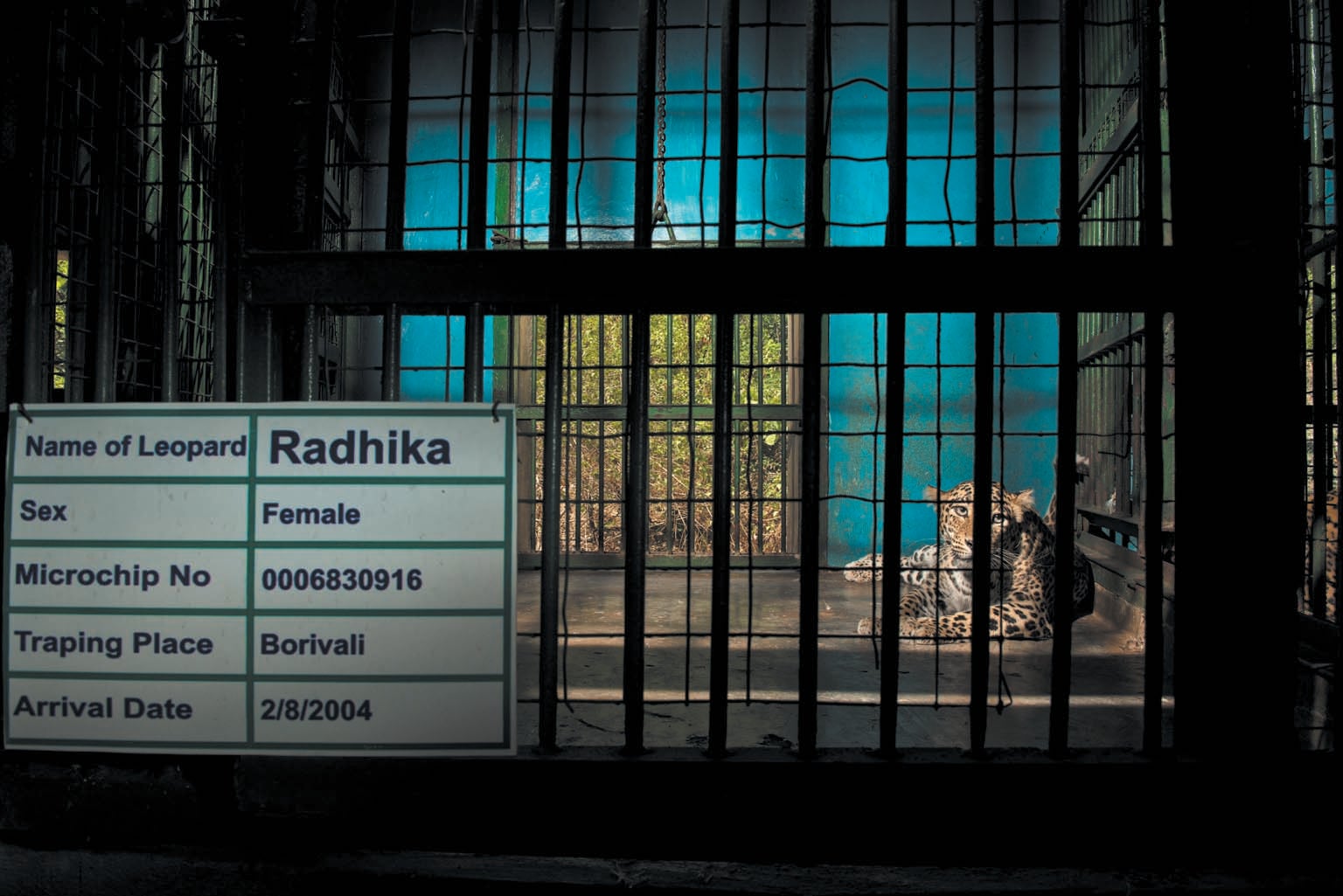
We collared a female and a male who turned out to be a mother and her subadult (in human terms, teenage) son. We could see from the signals, transmitting every three hours, that they sometimes met up, fed together on the same carcass and then went their separate ways. When the female had a new litter, there were two nights when she was away and her subadult son stayed with his young siblings—babysitting!
And then one night one little cub fell into a well. The GPS signals showed that the mother paced by the well all night, leaving at dawn for her daytime shelter about 250 meters away in a sugarcane field. The forest department rescued the cub the next day and released it after dark near the well. Within half an hour of the cub’s release, the mother was back by the well. A few hours later pugmarks from three cats were spotted together—the mom, her half-grown son and the baby, reunited.
Leopards were not only surviving but raising families in this agricultural landscape—and there was something about the way local people dealt with it that I could not fathom. I’d been trained to see the juxtaposition of large carnivores and people as a situation of imminent conflict. One day, early in my research in Akole, I drove with Ghule kaka (“kaka,” an honorific, means uncle), the farmer I was working with, to interview a woman whose goat had been killed by a leopard. Like a typical wildlife biologist, I asked her what problems she had with leopards. She brusquely replied that a particular leopard routinely came by a path in the hills, passed her house and went “that way.”
Later I asked Ghule kaka what I’d done to annoy her. “These people revere the leopard, and you’re asking her what problem her god gives her!” he replied. Nearby was a statue of Waghoba, a large cat deity that many people in the region have worshipped for at least half a century. I remember a pastoralist whose sheep was taken by a leopard. “The poor leopard had no prey in the forest,” he said. “What else could he eat? So he’s taken the sheep, and God will give me more.”
I’d started out as an arrogant young biologist convinced that we can resolve human-wildlife “conflict” only by understanding the animal involved. My experiences in Akole convinced me that it is humans who hold the key, and I soon got a chance to test that theory.
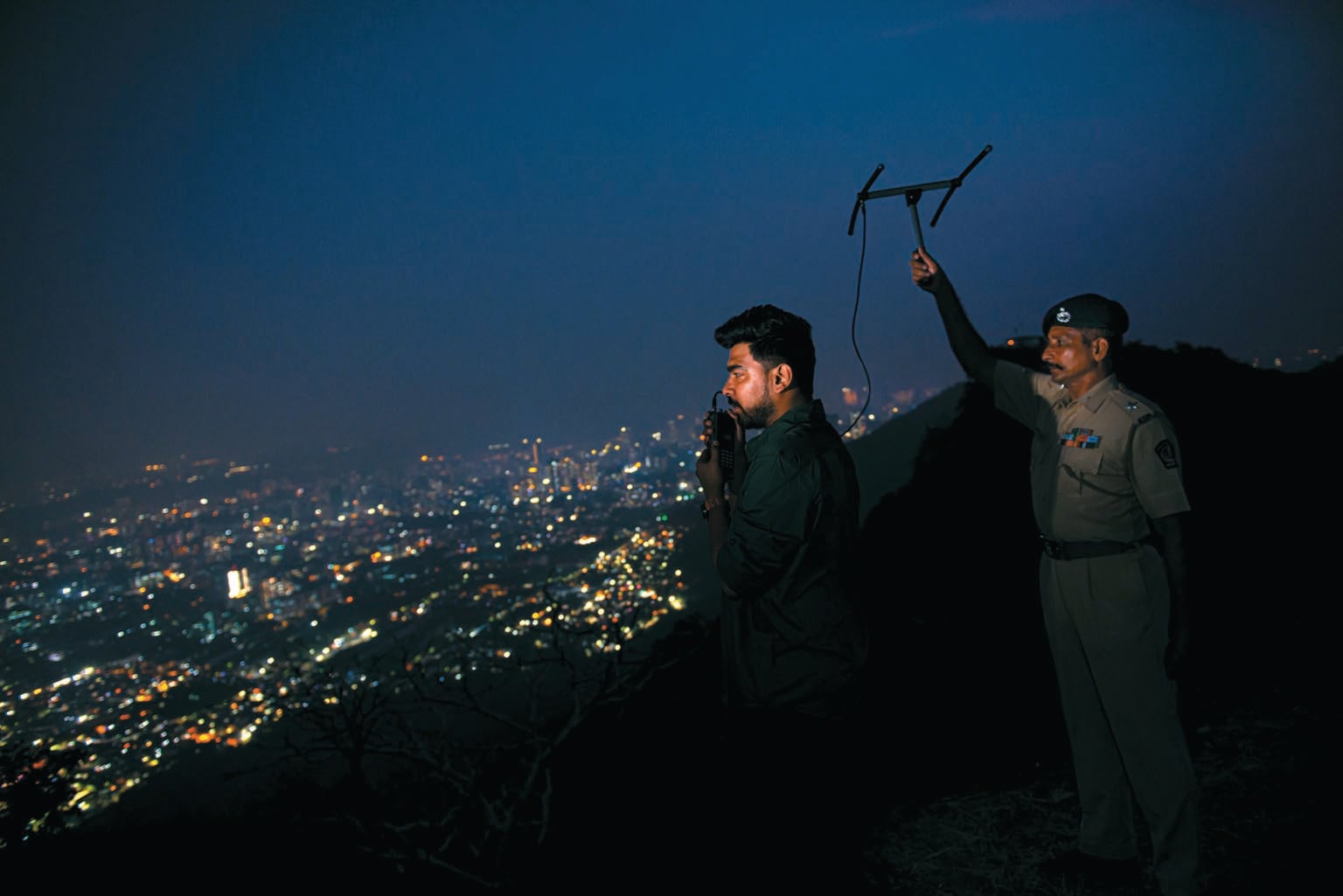
Alley Cat
In 2011 Sanjay Gandhi National Park got a new director, Sunil Limaye, who faced a serious problem: a history of leopard attacks in and around the reserve. At their peak, in June 2004, the cats attacked 12 people, most of them living in slums at the inner edge of the reserve forest. Limaye was familiar with my work in Junnar, and he had an idea about what the problem was. For years the forest department had been releasing leopards trapped around SGNP and elsewhere into the national park in relatively large numbers—15 in 2003. But relocation didn’t help: another leopard swiftly took over the vacated territory, and attacks near the release site were likely to increase. Although a lot of forest officers understood this dynamic, the pressure from politicians and the media to remove leopards was immense.
Limaye wanted to start an initiative involving scientists and the citizens and institutions of Mumbai to reduce the leopard conflict, and he wanted me involved. I was busy writing a Ph.D. thesis on the work I had done in Akole, but I couldn’t resist the chance to help resolve a terrible situation for leopards and people alike. Plus, my sister had moved to Mumbai around that time, so my daughter could play with her cousin while I worked. Limaye put together a team that included me, several forest officers and Vidya Venkatesh, currently director of the Last Wilderness Foundation. Many of Mumbai’s residents regarded the forest as a source of trouble, and our group agreed that mindsets had to change. The surest way to make that happen was to get Mumbaikars involved.
We recruited wildlife enthusiasts who’d long wanted to help protect a nature preserve they loved. They formed an association, Mumbaikars for SGNP, and began a campaign to educate their fellow citizens about the value of the national park as a reservoir of green space and a source of water and oxygen. Local students set up camera traps to count leopards. In 117 square kilometers in SGNP and the Aarey Milk Colony, a nearby scrub forest given over to cattle for milk production, the cameras captured 21 leopards—a very high density. The national park had wild prey, mainly deer, but the leopards were clearly being attracted to the slums by the many feral dogs that were feeding on the garbage strewn around.
We also interviewed people to understand their interactions with leopards. As social geographer Frédéric Landy of the University of Paris has noted in his work, it wasn’t the slum dwellers—the people most often attacked—who were calling for leopards to be removed. It was politically empowered upper-class residents of high-rises near the reserve who relished the green view but panicked if a leopard so much as showed up on a security camera. Interestingly, the Warlis and Kohlis, Indigenous peoples who worshipped Waghoba and who had lived in the forest for centuries before Mumbai expanded to surround it, were not afraid of leopards and rarely experienced attacks. They wanted the carnivores there to scare off encroachers and developers.
As the research and the awareness-raising program proceeded, the forest department improved its ability to handle leopard-related emergencies—one being cornered in the urban area, for example. The department also worked with the police to increase their capacity to control mobs that might seek to attack these animals and, perhaps most important, with the municipality to initiate garbage collection in areas around the park frequented by leopards. Once our report came out, we worked with the Mumbai Press Club and other media organizations to advise people about how they could stay safe: keep their surroundings clean, don’t let children play outdoors after dark, illuminate unlit environs and move away from a leopard if they spot one. Mumbaikars for SGNP held regular workshops with members of the press, seeking to change their coverage from sensational—some were habitually referring to leopards as “man-eaters”—to informed. In response to one media report that spoke of the dangers to school-going children at the edge of the park, the government started a school bus service there.
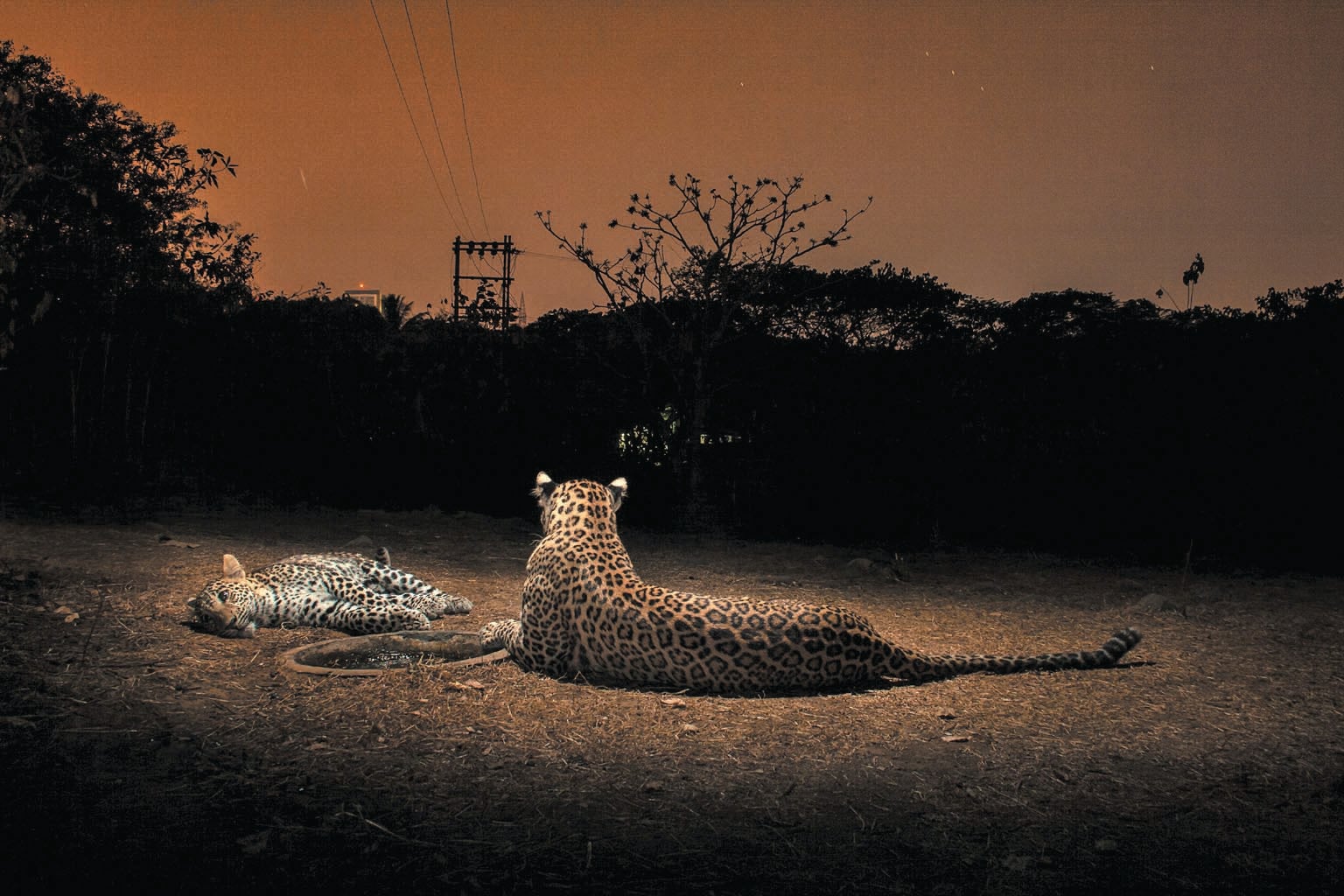
The outcome was a press and a public much more knowledgeable about and accepting of leopards, and the benefits were tangible. In most years since then, there have been no attacks. Individual leopards did attack people in 2017, 2021 and 2022, but because of the camera traps, which the citizen scientists continue to use, they could immediately be identified, trapped and taken to permanent captivity. Our work in Mumbai showed how important a sensitive press and an aware and mobilized public are in reducing human-carnivore conflict.
A Shared Landscape
I shouldn’t have been surprised that the people of the Indian subcontinent have a deep and complex relationship with the big cats they’ve shared space with since prehistory. But I was schooled in a strict separation of nature from humans that originated in Europe and reached its apotheosis in North America. Cleansing the landscape of all that they found threatening, European settlers all but eradicated wolves and cougars. When British colonizers arrived in India, they shot tens of thousands of tigers and leopards and exterminated the cheetah.
The dominant narrative in conservation continues to focus on large carnivores as predators that will inevitably hurt people or their livestock. In many documentaries about carnivores, the story is one of nature red in tooth and claw. This view presupposes conflict and implies that the only way to deal with large carnivores is to kill or remove them. I believe the contrary: most leopard-human conflict originates with the presupposition of conflict.
Among people, aggression prompts retaliatory aggression, and it might be the same for large cats. In the rare cases when they deliberately attack humans, we need to ask why. A leopard’s normal reaction to hearing or seeing people is to run away; how does it get over that fear enough to kill in the rare instances when one does so? Is it because of something we have done to that individual?
We cannot know. But when I look at most sites I visit, the dominant narrative is one of peace rather than conflict. In rural Himachal Pradesh, local people referred to leopards as “Mrig,” meaning “wild animal,” a neutral framing. We found humans and leopards sharing space, trying hard to survive and lead their lives, which were often very difficult to begin with.
Many Indian ecologists are moving toward the idea of coexistence in shared landscapes. Given the deep cultural relationship between humans and big cats in the subcontinent, it is conceivable that if ever the animals return to the ranges they have vanished from, people will accept them.
In December 2011, just as I was starting the work in Mumbai, a speeding vehicle on a nearby highway hit a leopard. An animal lover was driving past. Seeing that the animal was badly injured but still alive, he picked it up—it weighed 75 kilograms (165 pounds)—and put it in the trunk of his car, with his family sitting inside. He drove it to the national park in the hope that the forest department and its veterinarians would save it, but by the time he arrived, an hour later, the leopard had died. Its collar had fallen off, as it was designed to, but the microchip could still be read. It was Ajoba.
I was told people cried when they heard his story. A Marathi director was so inspired by the saga that he made a feature film on Ajoba, teaching millions of his fellow Indians to love leopards. It is this empathy that gives me hope that my daughter and her children will also inhabit a world rich with wild things.


